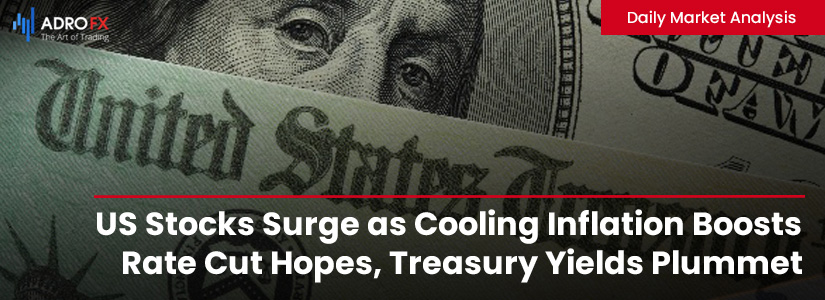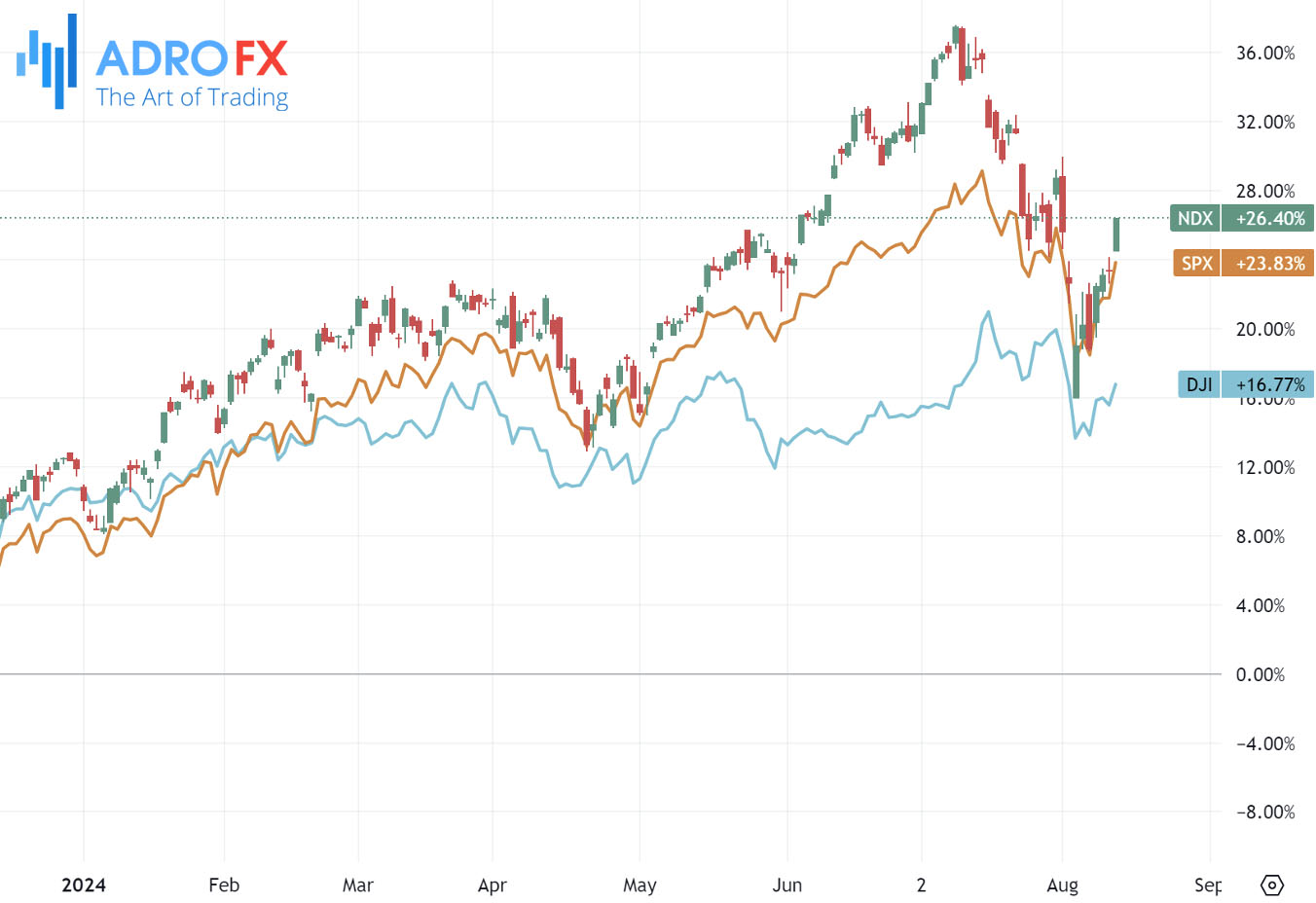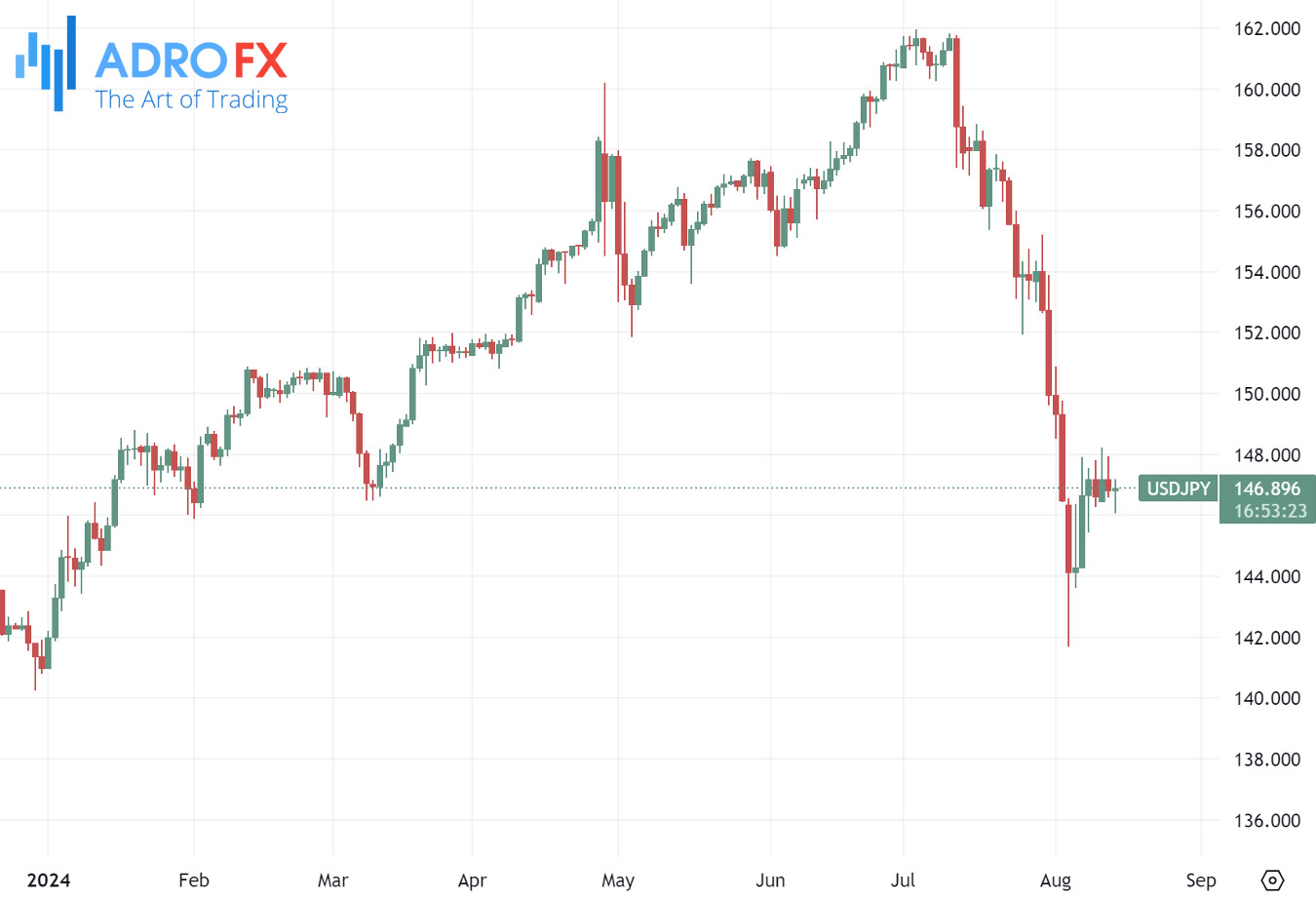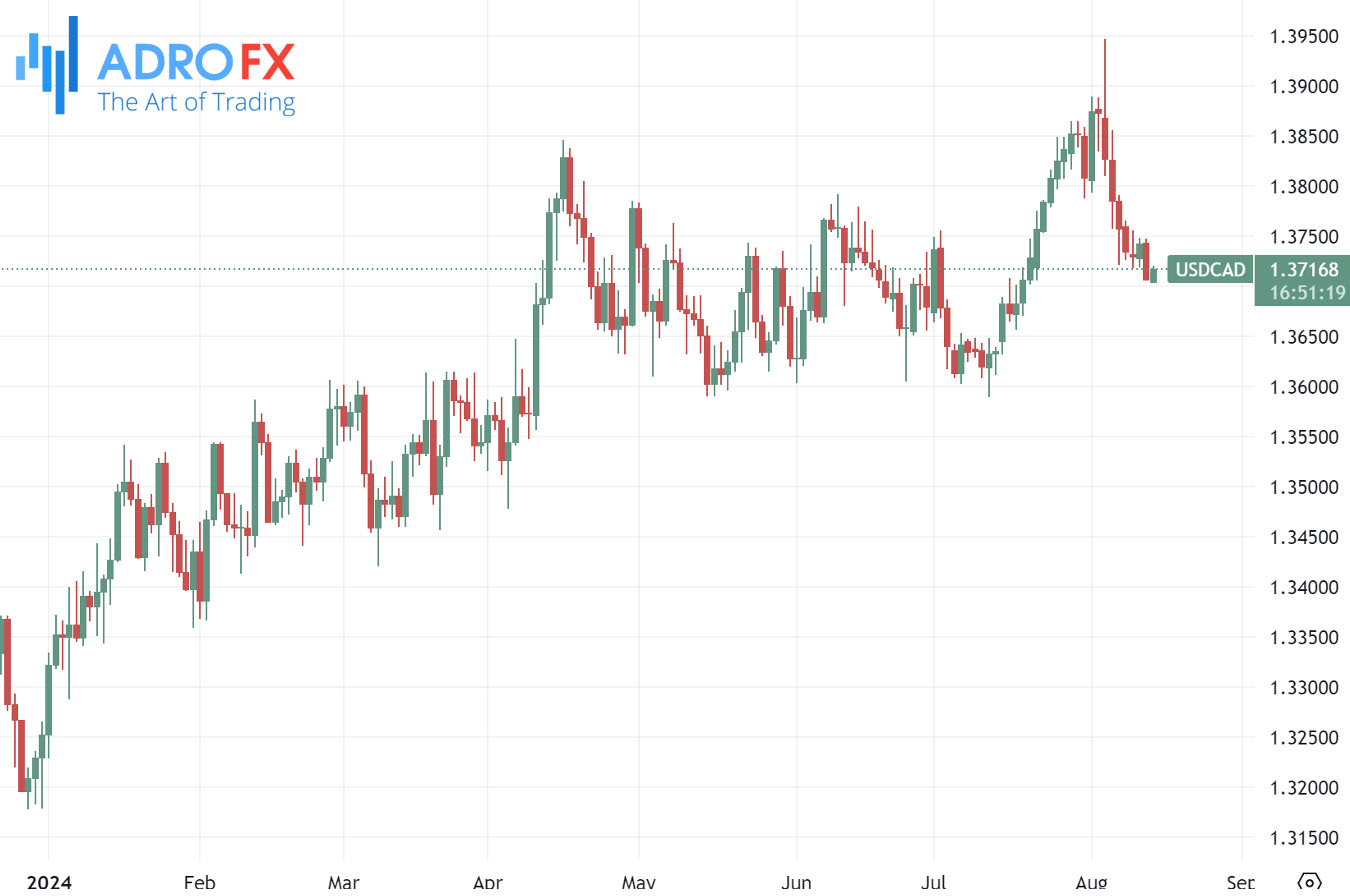US Stocks Surge as Cooling Inflation Boosts Rate Cut Hopes, Treasury Yields Plummet | Daily Market Analysis

Key events:
- New Zealand - RBNZ Interest Rate Decision
- UK - CPI (YoY) (Jul)
- USA - Core CPI (MoM) (Jul)
- USA - CPI (YoY) (Jul)
- USA - CPI (MoM) (Jul)
- USA - Crude Oil Inventories
US stocks surged on Tuesday as more evidence of cooling inflation bolstered expectations for a potential Federal Reserve rate cut as early as next month, leading to a significant drop in Treasury yields.
The Dow Jones Industrial Average jumped 389 points, or 1%, while the S&P 500 advanced by 1.5%, and the NASDAQ Composite saw a 2.3% increase.

Earlier Tuesday, data revealed that the Producer Price Index (PPI) edged up by 0.1% in July on a monthly basis, lower than the 0.2% increase anticipated by economists. On an annual basis, the PPI rose by 2.2%, slightly below the projected 2.3%.
The "core" PPI, which excludes the more volatile food and energy sectors, remained unchanged month-over-month, in contrast to the expected 0.2% rise. Annually, core PPI grew by 2.4%, below the forecasted 2.7% increase.
The USD/JPY pair experienced some dip-buying during Wednesday's Asian session, climbing back above the 147.00 level after a modest decline the previous day. Despite this rebound, the pair remains within a familiar trading range established over the past week, as traders await the release of the US Consumer Price Index (CPI) for further direction.

The highly anticipated US CPI report, set to be released later today, is expected to provide insight into the Federal Reserve's future rate-cut plans, which will significantly impact USD demand and influence the next move for the USD/JPY pair. As traders brace for this key data release, the prevailing positive market sentiment is weakening the safe-haven appeal of the Japanese Yen, giving a boost to the USD/JPY pair.
In the United Kingdom, the Office for National Statistics (ONS) is also scheduled to release the CPI for July on Wednesday. This report is crucial, as it directly affects the Bank of England's monetary policy decisions and the value of the British Pound.
Given the current situation, the upcoming UK CPI data may not significantly alter the BoE's policy direction unless the figures deviate markedly from expectations. A higher-than-expected CPI could spark speculation of a more hawkish BoE stance and delay any further rate cuts until 2025, potentially lifting the Pound Sterling against its major counterparts.

Conversely, if the CPI figures come in lower than anticipated, the likelihood of an earlier rate cut could increase, putting downward pressure on the British currency. In the unlikely event that annual CPI falls below 2%, this could accelerate rate cut expectations and cause the GBP to drop significantly.
The New Zealand Dollar edged lower on Wednesday, despite the US Dollar being under pressure. Following the Reserve Bank of New Zealand's August policy meeting, the central bank unexpectedly cut its Official Cash Rate (OCR) by 25 basis points, from 5.50% to 5.25%. This dovish move caught the market off guard, as most participants had anticipated that the rates would remain unchanged. In response, the Kiwi saw immediate selling pressure, and markets are now factoring in the possibility of another rate cut at the RBNZ’s next policy meeting in October.

Despite this, the broader risk-on sentiment has kept the USD subdued in recent sessions, which, coupled with signs of stronger demand from China - New Zealand’s largest trading partner - has offered some support to the NZD.
The Australian Dollar, however, weakened against the USD following the RBNZ's surprise rate cut. Given the close economic ties between Australia and New Zealand, developments in one country often influence the other’s currency. Nevertheless, the AUD received some support from recent domestic data showing strong wage growth in the second quarter, which has reinforced the Reserve Bank of Australia’s hawkish policy stance.

At its last meeting, the RBA maintained the cash rate, emphasizing its commitment to returning inflation to its 2-3% target range. RBA Governor Michele Bullock dismissed the possibility of rate cuts within the next six months, highlighting that the central bank remains vigilant about inflation risks and is ready to raise rates if necessary. Traders are now looking ahead to the release of Australia’s Consumer Inflation Expectations and Employment data on Thursday for further cues.
Meanwhile, the USD/CAD pair rebounded from a nearly four-week low during the Asian session on Wednesday, partially reversing the losses from the previous day. Spot prices managed to stay above the 1.3700 level, though the lack of strong bullish momentum suggests caution is warranted before expecting any significant recovery.

Crude oil prices gained traction, driven by estimates of declining US inventories and concerns over a potential escalation of conflict in the Middle East. This recovery in oil prices has supported the Canadian Dollar, which is closely tied to commodity markets, creating a headwind for the USD/CAD pair. According to the American Petroleum Institute (API), US crude stocks decreased by 5.21 million barrels during the week ending August 9, indicating robust demand in the world’s largest oil-consuming nation.









